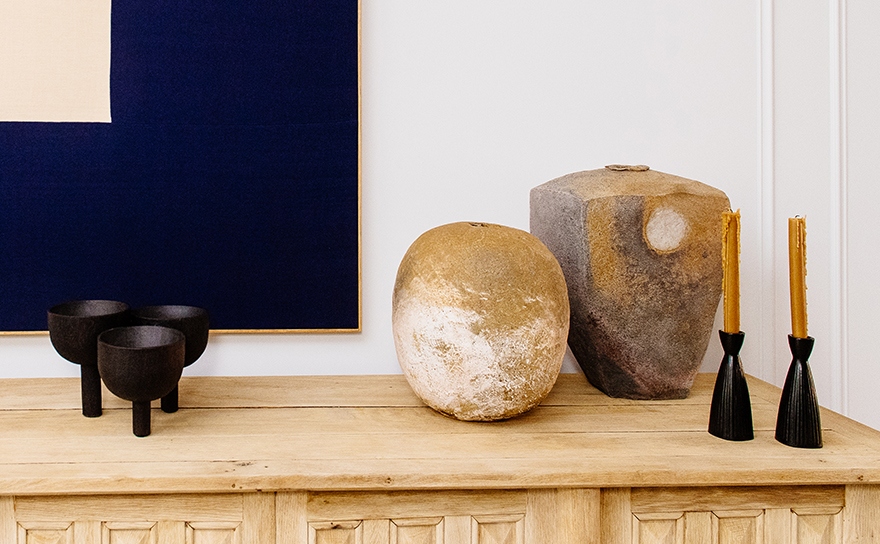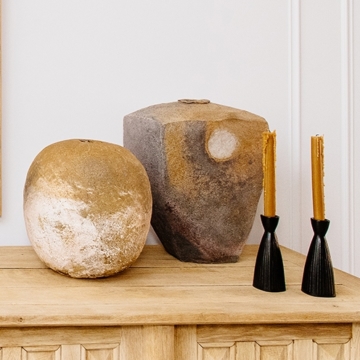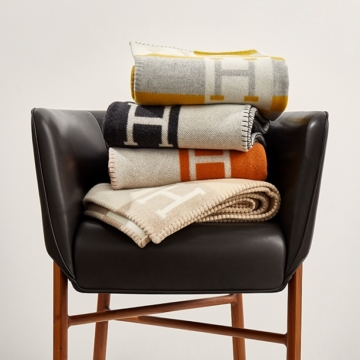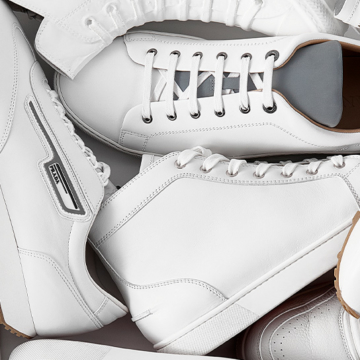

The Art Of Cleaning House: How To Care For Everything From Pillows To Paintings
Unlike jewelry, a handbag or your clothing, art and decor never leave the house — but that doesn’t mean these pieces don’t see their fair share of wear. Even though many of us have found ourselves spending our days at home, caring for things like collectibles, silverware and rugs can easily fall to the bottom of the to-do list. Once you live someplace long enough, surrounded by the same photograph that’s been in your family for generations or treading on the same hand-knotted rug that’s been in your home for years, these pieces can recede into the backdrop of your everyday. And unfortunately, that might mean they haven’t experienced the proper cleaning and care they deserve.
If that’s the case, The RealReal Home & Art Valuation Manager Clementine Bernard is here to help you care for everything from pillows to paintings (and maximize your earnings if you choose to consign in the future). Dirt, dust and debris, be gone: read on for her expert tips on cleaning your home investment pieces.
Art Care: What You Need To Know

Alex Katz “Pas De Deux I”; Barry McGee, “Untitled”; Garry Winogrand, “Untitled”
Caring for your artwork begins with framing. “When it comes to the frame itself, there aren’t really any curating rules to help you choose between wood or metal,” notes Bernard. “It comes down to pure aesthetics and budget. I do, however, recommend having more valuable works professionally framed under museum-grade plexiglass. Framing is often neglected, and people tend to overestimate their ability to frame a piece without damaging it. Museum plexiglass prevents harmful UV rays from filtering through, in addition to glare, and provides a sharp, clear image.”
Though museum plexiglass allows you to treat your art like the investment it is, it also comes at a price. “Museum-grade plexiglass is typically one of the more expensive framing techniques,” says Bernard. “For smaller budgets, I recommend going with a standard plexiglass face. Standard plexiglass may not give full UV protection in comparison to museum plexiglass, but it is still safer for the artwork in case of a move or accident.” Prevent accidents like the fall of hanging frames by anchoring them to the wall on a stud, if you can. Also make sure to weigh your framed art and use hardware that will accommodate the frame’s weight. There’s nothing more devastating than an art disaster that could have been avoided.
When it comes to art care, framing is only half the battle. “Never display paintings, photographs, prints or sculptures in direct sunlight,” advises Bernard. “Sun can cause innumerable, noticeable damages — cracks on paintings and yellow fading on prints and photographs, to name a couple. Another element to take into consideration is the humidity in the room. A humid room, or a room that fluctuates drastically in temperature, is never a good place for photographs and prints. Paper needs to stay dry in order to avoid creasing.” If your art pieces experience any damage, leave their care to the professionals and contact an art restoration specialist.
The ideal place for art is in the eye of the beholder. If you’re looking to highlight a single work, make sure it fits proportionally in the space. If you have multiple pieces of varying sizes, consider a gallery wall. “Finding the perfect spot on your bookshelf or walls for artwork is no easy task,” notes Bernard. “I personally enjoy when art is hanging at eye level. It creates more perspective in smaller spaces and allows the eye to naturally gravitate to the art.”
Three Ways To Clean Your Silver

Tiffany & Co. Flatware Service; Christofle Cocktail Shaker; Izabel Lam Place Setting
Polishing silver has always been a family affair for Bernard. “When I was a kid, I used to help my father clean his silver candleholders, serving pieces and flatware,” she says. “Our hands would get so dirty from all the tarnish, but we would listen to opera, and it was actually a fun, relaxing chore that we would do together. And it’s very satisfying to reveal the shininess of the silver.”
Bernard recommends three different ways to clean silver, but her preferred method requires a bit of proverbial elbow grease. “Silver polish and a brush is my preferred cleaning method, and the one product I use regularly to clean sterling flatware is Christofle’s silver-polishing product,” says Bernard. “It’s an anti-tarnishing solution that is aggressive enough to remove all visible wear. The key part to polishing silverware is to use a delicate horsehair brush that is thick enough so the polish can reach the silver pieces’ small, intricate crevices without marking or harming the silver. Similarly to polishing shoes, brushing silverware should be a quick, sharp movement.”
Turn to the dishwasher if you prefer a lower-maintenance alternative for everyday flatware. “Silver flatware can be washed in a dishwasher, as long as no other metals are combined,” notes Bernard. “Stainless steel does not go well with sterling silver. You also never want to combine elastic or rubber with sterling silver. The rubber presents an acidity that the silver does not tolerate well. The same thing goes for salt. Salt should never be placed in a silver salt cellar without a glass insert, and a sterling spoon should rest on the cellar’s edges instead of permanently dipped in the salt.”
Fresh out of polish? No dishwasher? Looking for an easy, at-home solution? There’s still hope for your silver. “The ancestral recipe to naturally clean silverware is with baking soda and aluminum foil,” says Bernard. “It’s not as efficient as cleaning silverware with actual polish, but it can get the job done. Lay out the silverware on an aluminum sheet, sprinkle baking soda over the silver and pour boiling water on top of the pieces you want to clean. The tarnish will stick to the aluminum rather than the silver. Be sure to dry all flatware while it is still hot so that no residue is left over on the silver.”
If you have any brass decor items, or items with brass accents, look for cleaning products that are specific to brass. “You should never use silver polish on brass, and vice versa,” says Bernard. “Brass is typically used for larger surfaces or items, as opposed to small, intricate details, so it’s pretty easy to maintain.”
Refresh Your Rugs, Pillows & Blankets

Hand-Knotted Moroccan Rug; Hermès Avalon Pillows; LV Monogram Blanket
If your doormat or patio rug is looking a little worse for wear, Bernard has more first-hand advice for making it look brand new. “I recently cleaned my outdoor rug, which had sat through months of rain and was covered in dust,” Bernard says. “Luckily, outdoor fabrics are extremely durable. They can easily be scrubbed with a broom, then blasted with water from a high-pressure hose. Add a bit of dish soap before scrubbing to really get the dirt out.”
Indoor rugs should be treated with a bit more care, but one thing to note: you should always act fast when confronted with a stain. “We all know how badly red wine can stain a rug,” laments Bernard. “I recommend removing any stain as quickly as possible with a gentle scrub. Dissolve a bit of dish soap in warm water, dip a small towel or brush in the solution and work out the stain. Salt or baking soda and sparkling water can also work wonders. Apply a fair amount of salt or baking soda directly to the stain, then pour a bit of sparkling water over it. The absorbent nature of the salt or baking soda will help the stain dissolve overnight. In the morning, wipe off anything that has lingered with a towel.”
If you find yourself constantly removing stains or spills from your rugs, consider investing in a professional carpet-cleaning machine. “A carpet-cleaner machine is a smart choice for those dealing with higher volumes of rug cleaning,” says Bernard. “These machines typically use steam to melt the dirt, which is then vacuumed. It’s the most efficient way to keep carpets — and sofas and curtains! — clean.”
Keeping lounging essentials like throw blankets and pillows clean isn’t too labor-intensive, and the work will pay off when you’re ready to relax. “Wash throw pillow covers and pillow shams by hand with cold water,” says Bernard. “Your only chance to deep-clean pillows without a removable insert is to use the aforementioned carpet-cleaning machine, or a steamer.”
Depending on a throw blanket’s materials and the care label’s instructions, you may opt to either machine-wash or hand-wash the blanket. “When it comes to drying, though, never twist the blanket in order to squeeze the water out,” says Bernard. “The trick is to set the throw on a towel that is as big as the blanket, fold the towel over and twist the towel instead. This way, the blanket’s fabric is not directly stretched or pulled.”
How To Keep Collectibles Looking Their Best

Supreme Murakami Skateboard Deck; Baccarat Jan Tésar Panther Sculpture; Bearbrick Chanel Medicom Toy
No matter how good your prized possessions look in their case, at some point you need to show them a little love. “Every home is subject to dust accumulation,” says Bernard. “Living in a big city, I realized that anything on my shelves would never be clean 100% of the time, and I’ve made my peace with that.” For many breakable collectible items, laying the pieces down on a soft, flat surface and dusting them off with a dry microcloth is all you need to keep them presentation-ready.
The impulse to show off your entire collection of Supreme decks, Bearbrick figurines or porcelain Herend animals in one place is likely strong, but it may be time to reconsider that strategy. “Collectibles should never be placed too close to a shelf or table’s edge, as they are vulnerable to the slightest nudge or unexpected draft,” says Bernard. “Place high-value collectible pieces a bit higher than eye-level on a deep shelf or alcove, with room in between each piece, to keep them safe and avoid an unfortunate domino effect. Condition is a key factor for resale value when it comes to precious items. Oftentimes, Bearbrick collectors won’t even remove the figurines from their packaging.” Using a removable adhesive putty can help keep your items from shifting on the shelf. However, always double check the putty’s packaging to ensure which materials it can safely be applied to.
If you love to collect porcelain plates and seventy-six-piece dinner services, giving them a little space can help them last a lifetime. “It’s common to see china buffets and kitchen cabinets completely saturated with piles of plates,” says Bernard. “Unfortunately, this can lead to tumbling towers and, at the very least, chipped edges. Stacking plates in closets instead is always safe, lining each plate with a dish towel or felt in between to avoid shocks. The same goes for teacups, bowls, serving dishes, etc. And an even better way to keep your china is in storage sets — soft fabric zippered containers that are perfectly cut to the size of your china.”
Decorative wooden bowls and other wooden decor pieces can always be freshened up with tung oil. “Tung oil is a plant-based oil that comes from tung trees, which are native to Southeast Asia,” says Bernard. “It’s one of the oldest methods to finish wood. Apply a small amount of the tung oil with a cloth and it can immediately bring aging wooden surfaces back to life, especially outdoor furniture.”
There’s one last thing you should never do with your collectibles. “Similarly to art, you should never place your collectible pieces in direct sunlight,” advises Bernard. “The exposure can create yellow markings on certain materials such as plastic, and in rare cases it can create cracks in the glazing of ceramics.”
Curate, Care, Consign
Keeping your art and decor clean ensures their longevity, and if one day you choose to sell them, just know that regular maintenance and care will also lead to a higher payout. “On average, home decor and art items in pristine condition (with tags or packaging, no signs of wear) or excellent condition (without tags or packaging, no signs of wear) sell roughly 20% faster than items in very good or good condition,” says Associate Merchandising Manager Kathleen Huang. In other words, when you’re itching to revamp your entire space and swap out those well-cared-for pieces that no longer spark joy, they’ll be prepped and primed to sell fast.
Ready to make room for something new? Consign art & decor now.
All items are pre-owned and consigned to The RealReal. Trademarks are owned by their respective brand owners. No brand owner endorses or sponsors this ad or has any association and/or affiliation with The RealReal.




